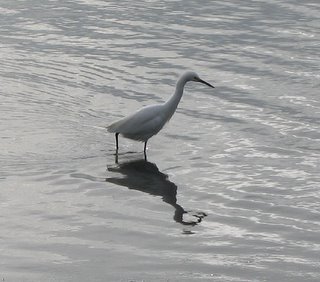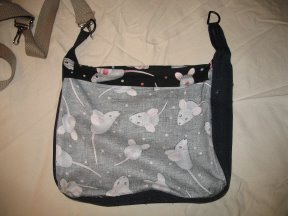Teen Knitting Club
 Wednesdays are Teen Knitting Club at the middle school (which DH and I both attended long ago). It's a solid hour's walk to school, so Wednesdays are also bird watching days. No photos of club, but I've put in a few birds.
Wednesdays are Teen Knitting Club at the middle school (which DH and I both attended long ago). It's a solid hour's walk to school, so Wednesdays are also bird watching days. No photos of club, but I've put in a few birds.TKC works best at schools because you have the potential for a captive audience and no transportation issues. If the kids want to attend, they will show up, which is not as consistently the case at libraries, church youth groups, and other after school venues.
If you're going to do a knitting club at a school, you'll need PTA and principal approval, a classroom assignment, a time slot, storage space, a designated parent and alternate parent, and a budget for supplies. At DD's middle school, the daughter of the head of the PTA got her mom to push it through. At the elementary school (where I guest knit sometimes on Thursdays, and yes I went to that school, too), the principal *is* the knitting teacher and thus it was an easy process. They have 35 or more 1st & 2nd graders every week!
The kids around here are pushed awfully hard to achieve, and most of them do. They are amazing kids, but they are stressed out! Nearly all the social time they have is spent in a competitive atmosphere or a see-and-be-seen party scene. The majority of these kids will go into law, finance, medicine, or politics. Everyone assumed that TKC would be the kind of thing where kids signed up, had specific projects and goals, and were expected to attend on a regular basis. In other words, just like the rest of their lives, but without a grade.

So, I decided to set up TKC as a salon, a la Margene's process-oriented attitude. It's during their lunch hour once a week down in the classroom adjoining the gym (no academic stigma there!), a large, sunny room with work tables and decent chairs. The kids trickle in as they finish eating nearby in the lunch area, and only a few bring their own projects. I have a variety of needles (mostly large plastic straights) and balls of yarn, yarn catalogs, knitting books, and lots of WIP swatches piled on the tables. DD brings her Bosworth spindles and Grafton batts and teaches spinning. Some kids just wind balls and chat happily (they are mesmerized by the ball winder -- it's so Zen!).
Most plunk down in chairs and pick up the nearest swatch, figure out the stitch, ask questions or pick up something easier, and knit. It's mellow, we talk about everything, people come and go, and we have newbies every week and the better knitters teach the new ones. I'm just there as hostess and provider and question answerer. Today I taught one of the more advanced girls about how to do colourwork. We didn't actually do any, but I talked her through it and her cranial light bulb was in the halogen range. It will be fun to see what she does with the knowledge!
I've gradually been introducing new stitches, new yarns, and smaller needles. Some kids are knitting hats with dpns, but nobody *owns* any one project. It's a communal system instead of yet another focus on individual achievement. When a kid masters a technique, we pat him on the back and move on to the next. When a kid has a tough time, we talk about learning curves and compare notes on how long it took to learn this or that. No tears, just words of support, helping hands, lots of tandem knitting and courtesy rows, and choruses of rip-it to cheer us through the worst of it. I don't know whether they have even figured out that it's a pressure-free zone, but they sure are enjoying it. I'm planning to stitch together the swatches to make an afghan for charity.
Today was odd, though, because some popular upperclassmen stopped by to take photos for the yearbook. The elegant 8th grade photographer had brought her entourage of over a dozen tall, gorgeous guys and fashionable girls. They were polite but LOUD compared to the usual TKC kids, who tend to be nerdy or shy. I rolled with it and draped batts and skeins on the kids, got the nerds to mix with the fashionistas, and quite a few of the older kids ended up staying and knitting (one girl is FAST!). I'm going to snare some of the jocks eventually. They *want* to learn but have doubts. I am seriously considering getting some dads to come and be positive role models.
I have a PTA storage cabinet up in the school office. They gave me a modest budget for buying a few books and supplies. And there is a roster of parents willing to help, luckily some real gems.
 So, Annie, does that answer your question? Btw, the way the comments section is set up right now, I can only answer here in the blog or privately if I already know the email addy -- the comments come to me as anonymous, unlinked emails. If you want a response off-blog, please say so in the comment and provide an addy. Thanks. I'll get up to speed on the technology soon but am rusty.
So, Annie, does that answer your question? Btw, the way the comments section is set up right now, I can only answer here in the blog or privately if I already know the email addy -- the comments come to me as anonymous, unlinked emails. If you want a response off-blog, please say so in the comment and provide an addy. Thanks. I'll get up to speed on the technology soon but am rusty.











